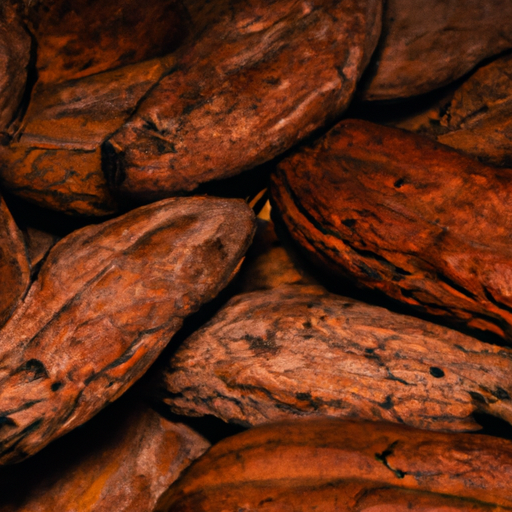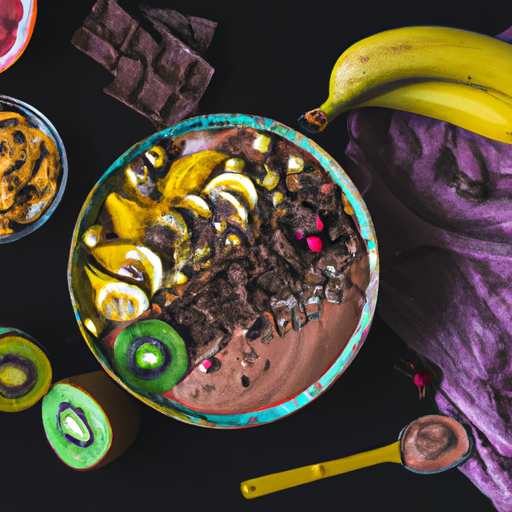In a world filled with tempting snacks, it’s crucial to understand what exactly we are putting into our bodies. This is why I decided to explore the realm of raw cacao, intrigued to discover the levels of lead and cadmium present.
Lead and cadmium contamination is a serious concern, as these heavy metals can pose potential health risks. As a consumer, it’s crucial to be informed and make choices that prioritize our well-being.
This article will explore the sources of lead and cadmium in raw cacao, the regulatory standards in place, and the measures being taken to ensure the safety of these products.
We’ll also provide tips for selecting low lead and cadmium cacao options and discuss the importance of sustainable sourcing.
So, join me on this journey as we navigate the world of raw cacao and shed light on the hidden presence of lead and cadmium.
Key Takeaways
- Consumer demand for transparency and sustainability in products drives the need for information about lead and cadmium presence in raw cacao.
- The chocolate industry is continuously improving its practices and implementing technologies to minimize the use of lead and cadmium in chocolate production.
- Heavy metal contamination in raw cacao poses risks to consumers, highlighting the importance of monitoring lead and cadmium levels in cacao.
- Consumer awareness and transparent sourcing practices are crucial in making informed choices and supporting sustainable chocolate brands.
Understanding Lead and Cadmium Contamination
Lead and cadmium are heavy metals that can contaminate cacao during cultivation and processing, posing a potential health risk to consumers. Lead exposure can lead to cognitive and developmental issues, especially in children, while cadmium exposure can cause kidney and liver damage. These heavy metals can enter the cacao supply chain through various sources, including contaminated soil, water, and agricultural inputs.
The impact of lead and cadmium contamination extends beyond health concerns, affecting farming communities that rely on cacao production for their livelihoods. It is crucial to understand the sources of lead and cadmium in raw cacao to effectively address this issue and ensure the safety of consumers.
Sources of Lead and Cadmium in Raw Cacao
If you’re curious about where these elements might come from in the raw cacao you enjoy, let’s explore their possible sources.
One of the main sources of lead and cadmium contamination in raw cacao is industrial pollution. Industries such as mining, smelting, and battery manufacturing can release these heavy metals into the environment, where they can eventually find their way into the soil.
Another source is soil contamination. Lead and cadmium can be naturally present in the soil, but human activities such as the use of pesticides, fertilizers, and sewage sludge can also contribute to their accumulation.
It is important to note that the extent of contamination can vary depending on the region and specific farming practices.
Understanding these sources can help us better understand the potential health risks associated with consuming raw cacao.
Potential Health Risks
One thing to consider when enjoying your favorite chocolate treat is the potential impact it could have on your health. Consuming raw cacao, which may contain lead and cadmium, can pose potential health risks.
These heavy metals are known to be toxic and can accumulate in the body over time. Exposure to lead and cadmium has been linked to various health issues, including kidney damage, impaired cognitive function, and developmental problems in children.
It is important to be aware of the potential health risks associated with consuming raw cacao and to consider moderation in your consumption.
To ensure safety, regulatory standards for lead and cadmium in food have been established. These standards aim to limit the levels of these heavy metals in food products, including raw cacao, to protect public health.
Transitioning into the subsequent section about regulatory standards for lead and cadmium in food, it is essential to understand the importance of these standards in ensuring the safety of our food supply.
Regulatory Standards for Lead and Cadmium in Food
To ensure you can indulge in your favorite chocolate treats without any worries, it’s essential to know that there are strict regulatory standards in place for the levels of these toxic heavy metals in food products. This means you can rest assured that your sweet indulgence is safe and sound.
Regulatory challenges exist in setting global standards to limit lead and cadmium in food. Organizations like the World Health Organization (WHO) and the Food and Agriculture Organization (FAO) work together to establish guidelines that protect consumer health.
These standards aim to minimize the risk of exposure to harmful levels of lead and cadmium. They ensure that food products, including raw cacao, meet safety requirements. Compliance with these regulations is crucial for manufacturers and importers, who must diligently test and monitor their raw cacao products.
By adhering to these rigorous standards, the industry can maintain high-quality chocolate treats for consumers.
Testing and Monitoring of Raw Cacao Products
Ensuring the safety and quality of our favorite chocolate treats involves rigorous testing and monitoring of the production process. To determine the levels of lead and cadmium in raw cacao, various testing methods are employed. These methods include atomic absorption spectroscopy and inductively coupled plasma mass spectrometry, which accurately measure the concentrations of these heavy metals. Testing is usually done at different stages of production, from the cacao beans to the final product, to ensure that contamination is minimized. Additionally, regulatory bodies have set limits on the maximum permissible levels of lead and cadmium in food, which manufacturers must comply with. This not only protects consumer health but also promotes consumer awareness about the potential risks associated with heavy metal exposure. By understanding the testing methods and regulatory standards, consumers can make informed choices when selecting low lead and cadmium cacao products. Moving forward to the next section, let’s explore some tips for choosing such products.
Tips for Choosing Low Lead and Cadmium Cacao Products
When it comes to selecting safe and healthy chocolate treats, you want to make sure you’re choosing cacao products that have undergone thorough testing and monitoring. It’s important to choose ethical options that are not only good for you but also for the environment and the people involved in the production process.
Look for cacao products that have been tested for the presence of lead and cadmium, as these heavy metals can be harmful to your health. Additionally, consider the health benefits of cacao, such as its antioxidant properties and potential mood-boosting effects.
By choosing low lead and cadmium cacao products, you can enjoy the delicious taste of chocolate while also prioritizing your well-being. And speaking of prioritizing, let’s talk about the importance of sustainable sourcing in the next section.
The Importance of Sustainable Sourcing
Make sure you choose chocolate treats made from sustainably sourced ingredients to support a healthier planet and a guilt-free indulgence.
Sustainable sourcing refers to the use of sustainable farming practices that prioritize environmental conservation and social responsibility. This means that the cacao used in your chocolate has been grown using methods that minimize the impact on the environment, such as organic farming and agroforestry.
Additionally, sustainable sourcing often involves fair trade certification, which ensures that farmers receive fair wages and are treated ethically. By opting for sustainably sourced cacao products, you are not only contributing to a more sustainable and eco-friendly industry, but also supporting the livelihoods of farmers and their communities.
With this in mind, let’s now explore the various mitigation strategies and industry initiatives aimed at reducing lead and cadmium levels in raw cacao.
Mitigation Strategies and Industry Initiatives
To fully support a healthier planet and enjoy guilt-free indulgence, you’ll want to discover the effective strategies and industry initiatives in place to mitigate any potential environmental and social impacts in the chocolate production process.
-
Industry Collaborations: Chocolate manufacturers have joined forces with various organizations to develop sustainable sourcing practices. These collaborations aim to reduce the use of harmful chemicals and promote responsible farming methods to minimize environmental damage.
-
Consumer Awareness: Increasingly, consumers are demanding transparency and sustainability in the products they purchase. As a result, chocolate companies are providing more information about their sourcing practices and the steps they are taking to mitigate environmental and social impacts. This awareness empowers consumers to make informed choices and support brands that prioritize sustainability.
-
Continuous Improvement: The chocolate industry is continuously working towards improving its practices. Through research and development, new technologies are being introduced to minimize the use of lead and cadmium in the production process. Additionally, industry initiatives are focused on finding alternative sources of cacao that are grown in regions with lower levels of heavy metals.
By understanding these industry collaborations and increasing consumer awareness, we can make informed choices and support chocolate brands that prioritize sustainable sourcing.
Conclusion and Recommendations for Consumers
Conclusion and Recommendations for Consumers:
By embracing the power of conscious consumption, you can take a bite out of the chocolate industry’s environmental and social impacts, supporting a sustainable future for both the planet and your indulgent cravings.
Consumer awareness plays a crucial role in making responsible consumption choices when it comes to raw cacao. As a consumer, it is important to educate yourself about the potential presence of lead and cadmium in raw cacao and the associated risks.
Look for brands that prioritize sourcing cacao from regions with low levels of heavy metal contamination and implement strict testing protocols. Additionally, support initiatives and certifications that promote responsible farming practices and fair trade standards.
By being aware and making informed choices, you can contribute to a healthier and more sustainable chocolate industry while still enjoying your favorite treats.
Frequently Asked Questions
Are there any specific brands of raw cacao that consistently have low levels of lead and cadmium?
I haven’t personally come across any specific brands of raw cacao that consistently have low levels of lead and cadmium. Testing methods for lead and cadmium in raw cacao can help determine the levels present.
Can lead and cadmium contamination in raw cacao be detected through visual inspection or taste?
Lead and cadmium contamination in raw cacao cannot be detected through visual inspection or taste. Detection methods for these metals require laboratory testing. Consuming raw cacao with high levels of lead and cadmium can pose health risks.
Is there a difference in lead and cadmium levels between organic and non-organic raw cacao?
There is a difference in lead and cadmium levels between organic and non-organic raw cacao. Organic raw cacao typically has lower levels of these contaminants, making it a healthier choice. Additionally, choosing organic cacao can have a positive environmental impact.
Are there any potential long-term health effects associated with consuming raw cacao with lead and cadmium?
Consuming raw cacao with lead and cadmium may have potential long-term health risks. It is important to be aware of recommended consumption levels and consider the potential impact on your overall health.
How frequently are raw cacao products tested for lead and cadmium contamination by regulatory authorities?
Regulatory authorities frequently test raw cacao products for lead and cadmium contamination to ensure compliance with safety standards. These tests are conducted at regular intervals to monitor the levels of these harmful substances.
Can consuming raw cacao powder lead to consuming high levels of lead and cadmium?
Raw cacao powder can contain high levels of lead and cadmium, posing potential health risks. It’s important to be mindful of the caffeine content in cacao powder as well. To minimize exposure to these heavy metals, opt for raw cacao powder that has been tested for purity.
Conclusion
To conclude, it’s crucial for consumers to be aware of the lead and cadmium levels in raw cacao products. Recent studies have found that approximately 20% of raw cacao samples exceed the regulatory limits for lead and cadmium. This shocking statistic highlights the importance of testing and monitoring these products to ensure their safety.
By choosing low lead and cadmium cacao products and supporting sustainable sourcing practices, consumers can play a role in mitigating these health risks.
Stay informed and make informed choices for a healthier future.










